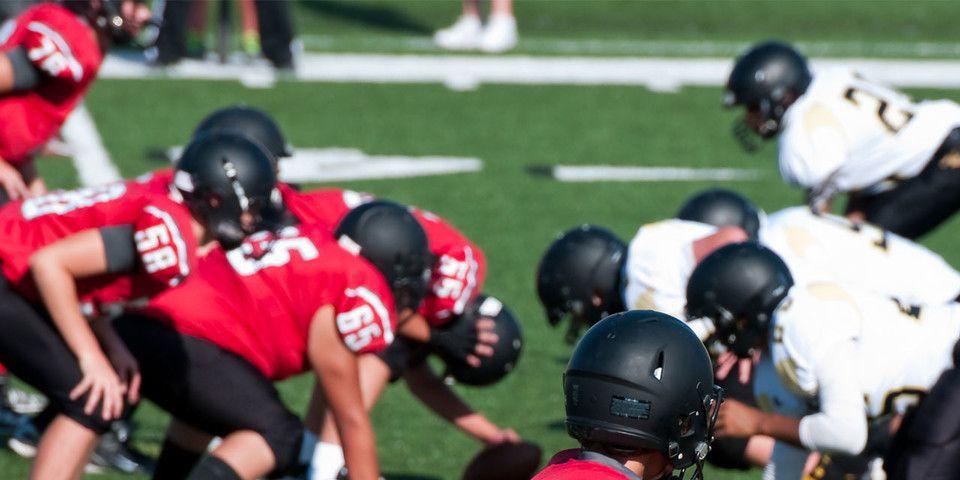Why Preventing Slip and Fall Injuries Starts in the Gym
Slip and fall sports injury prevention starts here!
Sports-related injuries occur for a variety of reasons. For some athletes, overuse injuries related to repeated motions and muscle fatigue can bring on chronic problems. For those playing contact sports, acute injuries are more likely. For example, an athlete may collide with another player or might lose balance and make impact with the ground itself, causing slip and fall injuries.
When you hear the term “slip and fall,” you may assume we’re talking about those who slip and fall on ice. Of course, these kinds of injuries do occur in winter sports - that’s a given! However, ice skaters and skiers aren’t the only ones at risk. Runners, cyclists and all kinds of athletes can also fall during training or competition. In fact, falls are one of the most common causes of a wide variety of sports-related injuries, including:
-
Ligament sprains
-
Bone fractures or dislocations
In many cases, falling injuries simply cannot be avoided. Especially if the surface is uneven or slippery, the risk increases. However, there are several ways that athletes at all levels can take a proactive approach to preventing these injuries as much as possible.
Below, we’ll outline three of our top recommendations.
Preventing Slip and Fall Injuries
-
Practice proper posture and technique. Simply holding your body in a disciplined athletic stance can help to eliminate some amount of risk. It’s also important to learn the proper form for the regular movements required by your sport. If you’re a runner, be sure that your feet are making contact with the ground in the correct manner. If you play basketball, mastering proper dribbling, passing and shooting will minimize the risk of slip and fall injuries while playing.
-
Commit to symmetrical gym training. This is an important part of building healthy, balanced strength in the body. When you’re in the gym and especially when you’re using weight to build muscle mass, it’s important to give the same amount of time and effort to each set of complementary muscle groups. If an athlete overtrains in one area and neglects the other, there is a greater chance of the body becoming off balance and injury prone.
Most imbalances tend to occur in the following regions of an athlete’s body:
-
Abdomen vs. lower back - athletes often focus on stomach muscles with neglect to back strength
-
Chest vs. upper back/rear shoulder - bench press exercises without equal training in the upper back and rear deltoids can result in a sloping upper back
-
Thighs vs. hamstrings - an often overlooked muscle group, hamstring muscles can become weak in quadricep-intensive workout regimes
-
Biceps vs. Triceps - again, the back of the body (tricep) is often ignored, leading to imbalanced arm muscles
Be sure that any gym training you do is systematic and geared toward full body balance. Work with a professional who has detailed knowledge of your sport and your unique strengths and weaknesses. Exercises should be progressive, re-evaluated regularly, and adjusted over time in order to challenge and motivate you!
-
Use common sense. This one is fairly straightforward. Even the best conditioning programs can’t prevent injuries without basic self-care and common sense on the part of the athlete. To get the most out of your training on the field and in the gym, make sure you also:
-
Drink plenty of fluids. Staying hydrated is an important part of your regime before, during, and after exercise or play.
-
Take scheduled breaks during practices, games, and other events. Use this time to rest and hydrate to reduce the risk of injury and heat illness. Coaches and trainers are advised to reduce or stop activity when heat or humidity is high.
-
Play it safe. Follow the rules against headfirst sliding, body checking, horseplay, and other unsafe behaviors, and remove yourself from the activity if you experience any pain.
-
Wear all recommended safety gear. This should be the correct gear as designed for the sport that fits properly...but don't perform risky stunts or behaviors on the assumption that your gear will keep you safe from slip and fall injuries!
-
Be sure to get adequate rest. Overwork is the enemy of health and can actually be counterproductive to your training. Take at least one day off each week to give your body time to recover.
Despite the best prevention efforts, we know that accidents still happen. That’s why our sports medicine specialists here at Rothman Orthopaedics are ready to evaluate athletes who are experiencing symptoms following a fall-related injury. When you need more specialized slip and fall injury treatment, our team can help you decide which treatment options are right for you so you can get back to playing the sport you love as soon as possible.
Visit us here or contact us at 1-800-321-9999.
Related Specialties
Related Conditions
Related Programs
-

Injury Prevention Program
The Injury Prevention Program at the Rothman Orthopaedic Institute is dedicated to the prevention of injuries from athletic participation, particularly youth sports.Read More




